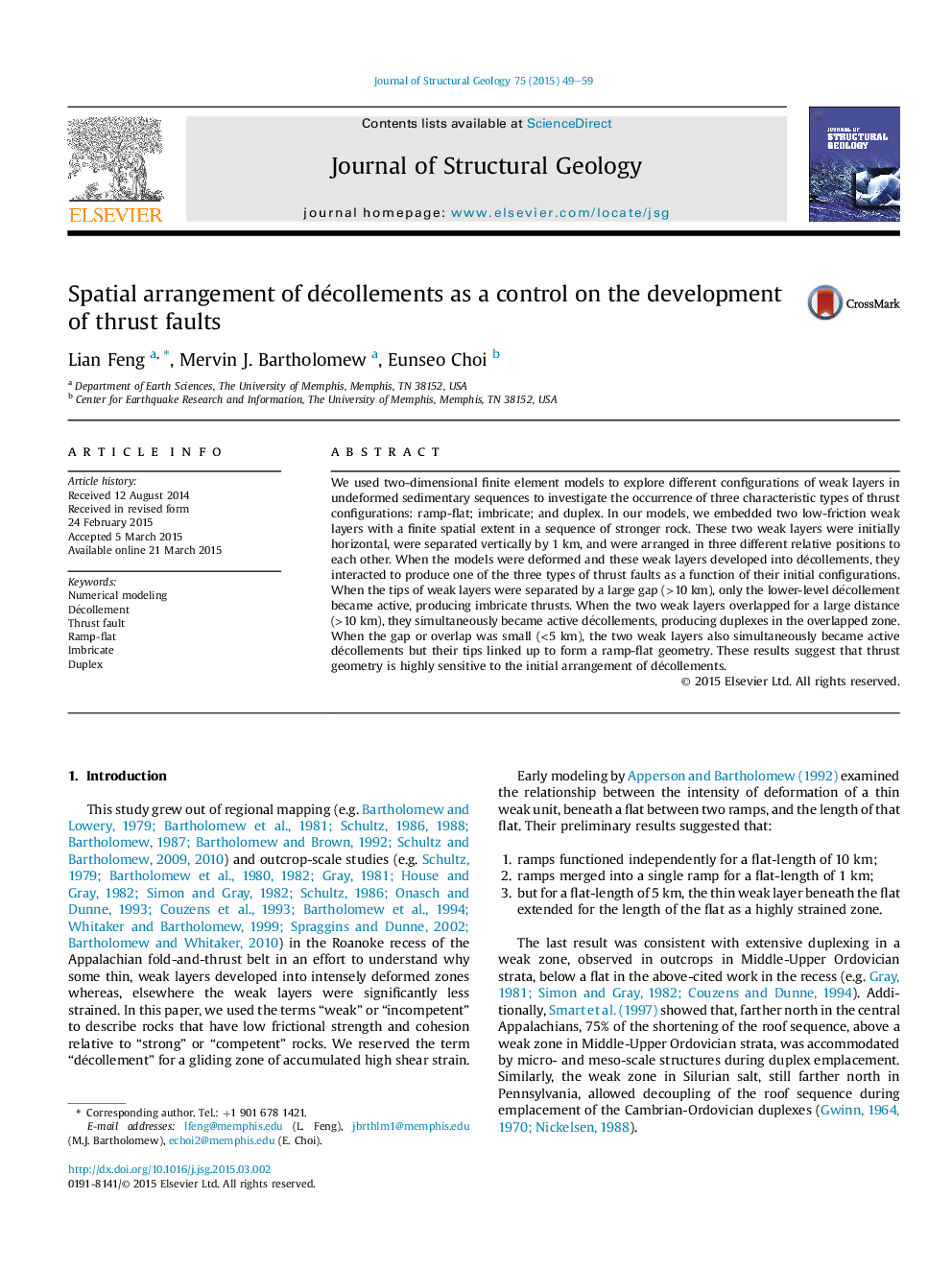| Article ID | Journal | Published Year | Pages | File Type |
|---|---|---|---|---|
| 6444795 | Journal of Structural Geology | 2015 | 11 Pages |
Abstract
We used two-dimensional finite element models to explore different configurations of weak layers in undeformed sedimentary sequences to investigate the occurrence of three characteristic types of thrust configurations: ramp-flat; imbricate; and duplex. In our models, we embedded two low-friction weak layers with a finite spatial extent in a sequence of stronger rock. These two weak layers were initially horizontal, were separated vertically by 1Â km, and were arranged in three different relative positions to each other. When the models were deformed and these weak layers developed into décollements, they interacted to produce one of the three types of thrust faults as a function of their initial configurations. When the tips of weak layers were separated by a large gap (>10Â km), only the lower-level décollement became active, producing imbricate thrusts. When the two weak layers overlapped for a large distance (>10Â km), they simultaneously became active décollements, producing duplexes in the overlapped zone. When the gap or overlap was small (<5Â km), the two weak layers also simultaneously became active décollements but their tips linked up to form a ramp-flat geometry. These results suggest that thrust geometry is highly sensitive to the initial arrangement of décollements.
Related Topics
Physical Sciences and Engineering
Earth and Planetary Sciences
Geology
Authors
Lian Feng, Mervin J. Bartholomew, Eunseo Choi,
